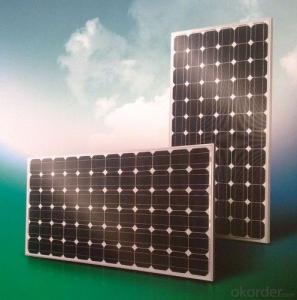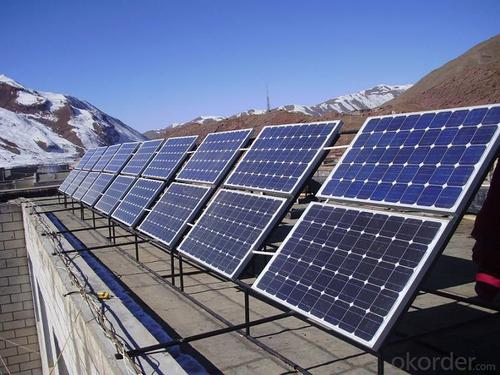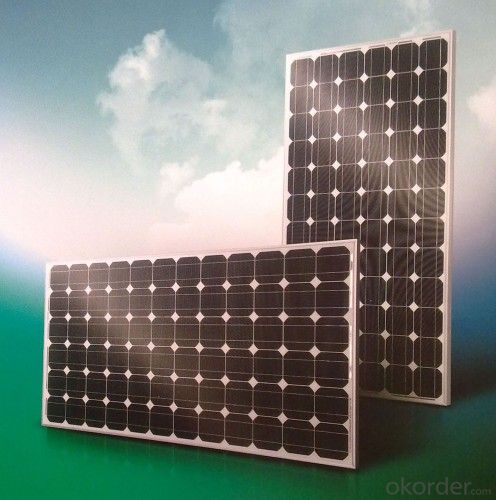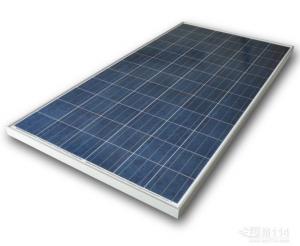Solar Panels Dayton - Polycrystalline Silicon 250w Solar Module for Japanese Market
- Loading Port:
- China main port
- Payment Terms:
- TT OR LC
- Min Order Qty:
- 100000 watt
- Supply Capability:
- 10000000 watt/month
OKorder Service Pledge
OKorder Financial Service
You Might Also Like
As a solar brandoriginated from America (USA) with production bases in USA, China, Taiwan andVietnam, Amerisolar is taking more competitive strategies based on its Leading Technology, High Quality, No Anti-dumping Tariff prices and worldwide Door-to-Doorlogistics services.
Quality Certificates
IEC61215, IEC61730, IEC62716, IEC61701, UL1703, ETL, JET,JPEC, CE, MCS,
CEC, Israel Electric, Kemco
ISO9001:2008: Quality management system
ISO14001:2004: Environmental management system
OHSAS18001:2007: Occupational health and safety management system
Amerisolar’s photovoltaic modules are designed for large electrical power requirements. With a 30-year warranty, AS-6P offers high-powered, reliable
performance for both on-grid and off-grid solar projects.
Key features:
Low degradation and excellent performance under high temperature and low
light conditions.
Robust aluminum frame ensures the modules to withstand wind loads up to
2400Pa and snow loads up to 5400Pa.
Positive power tolerance of 0 ~ +3 %.
High ammonia and salt mist resistance.
Poly 250w with high module conversion efficiency and high quality. Meanwhile all panels have positive power tolerance of 0 ~ +3 %.

FAQ:
1. How long will my inquiry get response?
Your inquiry related to our products or prices will be replied within 24 hours.
2. Can I get professional service and suggestion?
Well-trained and experienced staffs to answer all your questions in fluent English.
3. Do you accept OEM or customized design?
OEM & ODM, any your customized lightings we can help you to design and put into product.
4. What if I need specific design?
Distributorship are offered for your unique design and some our current models.
- Q: How do solar panels affect the overall energy security of a building?
- Solar panels can greatly enhance the overall energy security of a building. By harnessing the sun's energy, solar panels provide a reliable and renewable source of electricity. This reduces dependence on traditional fossil fuels and the associated risks of price fluctuations, supply disruptions, and geopolitical tensions. With solar panels, buildings can generate their own clean energy, ensuring a more stable and self-sufficient power supply, which ultimately contributes to a stronger energy security profile.
- Q: I am curious about how much of the energy that a solar panel of a given size and capacity will produce in it's lifetime, and what fraction of that energy was required to produce it in the first place?
- The attached link is to an article from the 200 Home Power magazine. In that article the energy payback was found to be between 2 and 4 years. Newer panels are more efficient primarily because the silicon wafers used today are thinner. The silicon cell embodies most of the energy required to make a solar panel. Today most solar panels will produce the amount of energy required to manufacture them in between about 9 months and 2 years depending upon the specific technology used to make it. Solar panels are expected to produce energy for between 30 and 50 years. Therefore it takes around 5% of their total energy production to produce them. Note that these figures depend upon where the panels are installed. Panels in very sunny areas may generate more than 3 times the energy of panels in a cloudier area. Edit - The energy payback meta-study that carbonates references below mention one particular study Alsema (2000), which the authors used as a baseline to come up with their 4 year payback figure. These studies DO NOT assume ideal conditions. The Alsema study assumes an annual an irradiation of 700 kWh/m2/yr. That is the United States average irradiation and does take into account cloudy weather and the like. Under idea conditions the amount of energy collected can be almost twice as much. Albuquerque New Mexico is an example. The figures I mentioned above are recent values reported by several different panel manufacturers with whom I discussed the issue at the 2006 IEEE 4th World Conference on Photovoltaic Energy Conversion held this May. The very long payback times that carbonate highlights are almost certainly wrong. The study he references concludes that paybacks range between 2 and 8 years with 4 years being the most likely. In my opinion payback times are actually a fair bit shorter based on conversations with the manufacturers.
- Q: if u buy solar panels and never take em out of the box for like thirty years will they still work good thirty years after you bought them
- They should do fine.
- Q: Can solar panels be used for powering outdoor signage?
- Yes, solar panels can be used to power outdoor signage. Solar panels convert sunlight into electricity, providing a sustainable and renewable energy source for outdoor signage. This eliminates the need for traditional electricity sources, reduces energy costs, and minimizes the environmental impact.
- Q: Can solar panels be installed in areas with high pollution levels?
- Yes, solar panels can be installed in areas with high pollution levels. While pollution can potentially reduce the efficiency of solar panels, they can still generate electricity even in polluted areas. Regular cleaning and maintenance of the panels can help mitigate the impact of pollution and ensure optimal performance. Additionally, installing solar panels can contribute to reducing pollution by promoting the use of clean and renewable energy sources.
- Q: How to Compare Solar Panels? ?
- Every okorder for links and faq's.
- Q: Are there any fire hazards associated with solar panels?
- Yes, there are potential fire hazards associated with solar panels. Although solar panels themselves do not typically catch fire, electrical malfunctions or faults in the wiring, inverters, or connectors can lead to overheating and fire. Additionally, if a fire breaks out in the surrounding area, solar panels can hinder firefighting efforts by creating potential electrical hazards and obstructing access to the roof. Therefore, proper installation, regular maintenance, and compliance with fire safety regulations are crucial in mitigating these risks and ensuring the safe operation of solar panel systems.
- Q: Can solar panels withstand extreme weather conditions?
- Yes, solar panels are designed to withstand extreme weather conditions such as high winds, heavy snowfall, and hailstorms. They are made with durable materials and undergo rigorous testing to ensure their resilience.
- Q: Hello everybody, the area we are living has energy crises with no electricity available most of the time. What I am thinking is to buy a solar panel with other required accessories. Please note we have normally long sunny days most of the time during a year.Please advice installing solar energy system would supply energy 24/7? I have a television, a dvd player, a fan, 4 energy saver lights (2 watt each) and a laptop. Please also advice the specifications for the system to be installed and the points I need to ensure at the time of purchase. I think of buying a solid battery (not acidic battery)The forum is open for your kind suggestions.Thanks!
- We put in photograph voltaic panels before this year, for the final six months we've became on our oil fired boiler approximately seven circumstances, for an hour every time. we are living in north Scotland. Our panels are for water heating only, they comprise fluid which passes by our warm water storage subsequently elevating the temperature. For a 4.4m panel and a greater complicated than regular setup it cost us ?3500 alongside with labour. even nevertheless i've got faith you're thinking approximately panels for producing electricity? wherein case that form of photograph voltaic panel is woefully innefficient in this u . s . a .. i could advise to everybody to in effective condition photograph voltaic panels for water heating, it has stored us a fortune so a procedures and might pay itself back in approximately 5 -0 years depending on oil expenses. For electricity era nevertheless? no longer cautioned. As for grants, as quickly as we utilized we've been informed that all the supply money were used up and that became into that.
- Q: Can solar panels be installed on a boat or RV?
- Yes, solar panels can be installed on both boats and RVs. They provide a sustainable and efficient source of energy, allowing for off-grid power generation while traveling or moored. The panels can be mounted on the roof or other suitable areas to capture sunlight and convert it into electricity to power various onboard appliances and systems.
Send your message to us
Solar Panels Dayton - Polycrystalline Silicon 250w Solar Module for Japanese Market
- Loading Port:
- China main port
- Payment Terms:
- TT OR LC
- Min Order Qty:
- 100000 watt
- Supply Capability:
- 10000000 watt/month
OKorder Service Pledge
OKorder Financial Service
Similar products
Hot products
Hot Searches
Related keywords




























